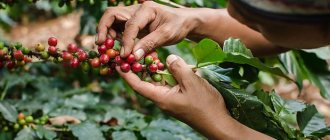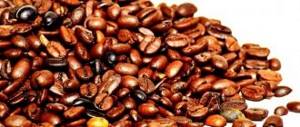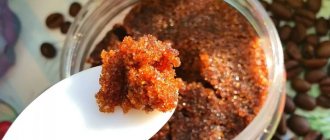Sourness in taste is considered the main property of coffee. For example, professionals easily distinguish between flavors and choose the most attractive option. Although for most people this taste is still unusual. Therefore, many are interested in why coffee gives sourness, what shades experts highlight, how to choose a drink with the optimal taste, and also how to create a sour taste yourself.
What determines the intensity of sourness?
Berries for elite varieties of sour coffee are produced in the highlands, where the lack of oxygen affects their ripening period, which, accordingly, increases. Thanks to longer cultivation, the berries get a richer and brighter taste. Moreover, the higher the area where coffee trees are grown, the more sourness will be felt in the coffee (if it is roasted and prepared correctly). It turns out that this feature is considered an indicator of the high quality of the drink.
The way coffee is processed can also affect its “acidity.” For example, "Washed" or "washed" processing will retain much more acid in the beans, compared to those that are processed in another way - "Unwashed" or dry method.
Roasting also creates its own sourness. Everything is simple here: the lighter the beans from roasting, the more acids remain in them, and when grinding and further preparation they pass into the drink itself. It is worth remembering that if the beans are dark during the roasting process, the coffee will be less sour, but, most likely, there will be hints of bitterness in it.
Other reasons
Mold in the coffee maker
Wet pulp constantly gets into the coffee brewer container with waste. If the compartment is simply shaken out, it will have a high humidity of 75%.
Due to the remaining moisture in the drink, mold appears. It causes a sour taste. Poisoning is possible.
Wash the container with the cake and wipe it dry every time after brewing the drink. Once a week, thoroughly clean your coffee maker using professional cleaning products.
Find out about other cleaning options in the article “How to properly descale a coffee maker at home.”
If you have purchased a professional machine, the article “Review of descalers for coffee machines” will help you.
Interesting! How to make cappuccino in Turk
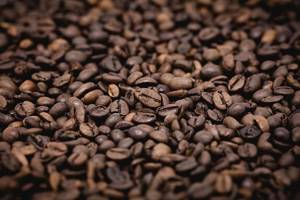
Overdue
Coffee beans deteriorate if stored improperly.
Ground coffee berries are stored in a cool place in a hermetically sealed container. The following are harmful to them: sun, prolonged exposure to air, or hot weather.
Under the influence of negative factors, the content of aromatic oils in coffee berries decreases. They change the taste and begin to sour.
What else to expect from expired coffee is described in the article “Can I drink expired coffee?”

Storage conditions
Over time, the grains lose their richness and deep aroma. The longer you store them, the worse the coffee turns out.
Ground grains spoil faster. Even if you comply with storage conditions.
The more time has passed since the beans were roasted, the less caffeine they contain. Therefore, you won’t be able to cheer yourself up with a hot drink.
To ensure that the aromatic delicacy retains its properties and does not sour, consider the shelf life. After opening the package, use its contents within two weeks.
Find out more in the article “How to store coffee beans at home.”
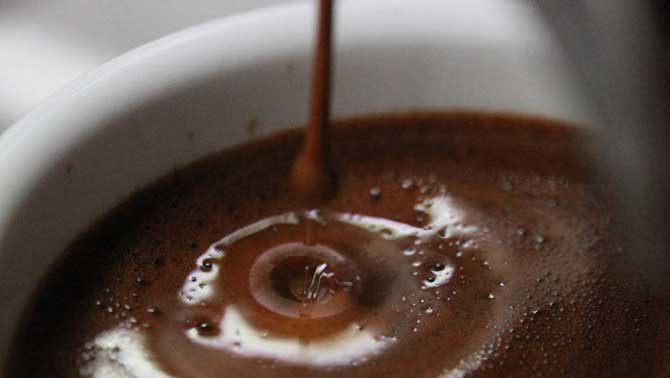
Which coffee is sour - Arabica or Robusta?
It should be remembered that sour flavors can only be obtained from Arabica beans. Accordingly, in blends of Arabica and Robusta, the amount of the former will affect the “acidity” number. It turns out that the higher its content, the richer the taste of acid in the finished mixture, and if there is more robusta, then such a taste will barely be visible.
It is worth remembering that a Robusta drink will never be sour, except for the Guatemalan variety, which still contains a small amount of Arabica. By the way, if you choose 100% pure robusta, the final drink will always taste bitter.

Possible reasons for the unpleasant sour taste of coffee
The pronounced nasty color of acidity does not add sophistication to the taste of the drink and reduces the pleasure from consuming the product to zero. This may be due to the following reasons:
- Incorrect processing. An unpleasant taste appears in the finished drink if during the preliminary step the grains were not completely dried or got wet after drying.
- Long fermentation process. During processing, coffee beans are necessarily subjected to fermentation, placing them in special vats of water for a period of 10 to 70 hours. If the raw material is in the tanks for an extremely long time, it becomes very fermented and acquires high acidity.
- Introduction of dirty water during processing of grains. If insufficiently purified water or dirty fermentation tanks are used during the fermentation step, this can lead to the fact that some beans remain in the tanks and undergo the fermentation process again, and then end up in the finished clean mixture and spoil the whole batch, even one where all the coffee is empty. sourness.
- Errors when making a drink. Low brewing temperature, pouring a hot drink into a cool mug, the presence of mold in the coffee maker, very large (hard) grind and a small amount of raw materials - all these reasons can be a prerequisite for the appearance of a sour taste in fragrant caffeine-containing water prepared at home or in public catering establishments .
- Incorrect storage. If grains are stored in an open container or container made of unsuitable material, at very high temperatures or under constant exposure to direct sunlight, they lose a large part of their aromatic oils and change their taste characteristics, which also affects the appearance of sourness in the finished drink.
If a person is used to drinking a coffee drink, adding a lot of sugar, cream and other ingredients that change the natural taste of the beans, then the natural slight sourness in coffee without additives may seem very strong and disgusting to him.

The impact of the listed reasons almost always leads to the appearance of unnecessary colors in the taste of the drink, regardless of what type of raw material (Arabica or Robusta) is used to obtain fragrant water.
Coffee varieties without sourness
Lovers of a bitter, rich taste without sour notes are recommended to drink a drink that contains 100% robusta. And if you want to drink espresso, which almost always has a tart natural taste, it is better to choose strong varieties of coffee with bitterness, which contain more caffeine.
When choosing a variety without sourness, you should focus on its characteristics, geography of origin, and degree of roasting. After all, taste depends on these parameters.
Today we can distinguish the following varieties without sourness:
- Mojdiana, Brazil - the taste contains notes of chocolate with cherry aroma. It is usually chosen by those who prefer a sweet and rich drink that is free of impurities.
- Yellow Maragogip, Brazil. It contains a unique bouquet of sweetness and rich aroma.
- Maragogip, Nicaragua. It has a high caffeine content. Many people add alcohol or milk to it, because it goes perfectly with these additive options. In coffee of these varieties, notes of cocoa and spices are felt.
- Robusta Cherry, India. It has a deep, rich composition. An ideal variety for espresso due to its increased strength level.
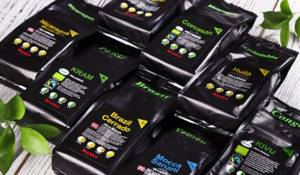
Natural sourness
Coffee varieties
Coffee berries contain three dozen acids. Professional coffee lovers divide them into three groups:
- floral acid - grapes;
- citrus – orange, lemon, berries;
- acid of nuts and cocoa.
High-quality Arabica, which grows in India, Brazil, and Colombia, is considered sour.
Sour Arabica varieties: “Burundi”, “Rwanda”, “Sidamo”, “Ethiopia Yorgachef”. Types with less pronounced sourness: “Ethiopia Jimma”, “Guatemala”, “Supremo”, “Excelso”.
These varieties make classic cappuccino or espresso.
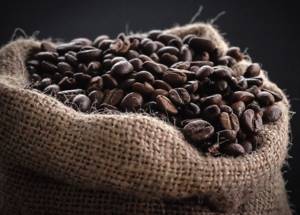
Peculiarities
The taste of coffee depends on the altitude at which the plantation is located. Sour coffee berries grow in the mountains, and bitter coffee berries grow in the lowlands.
This feature depends on the oxygen level. On plantations up to 2000 meters above sea level it is 3 times less. The grains ripen more slowly, so they have a rich sour taste.
The sourish taste of grains is fully revealed by “washed” processing, when the pulp and gluten in the parchment shell (pachment) are removed from them.
When the coffee berries dry completely and ripen on the tree, their taste becomes sweet.
Taste in blends
Coffee producers produce several dozen blend options. In them, Arabica is mixed with Robusta in different proportions.
The acidity of the blend depends on the amount of Arabica. The more it is, the stronger the sourness will appear.
Blends with a predominance of robusta are suitable for fans of the bitter drink.
Interesting! What is a Chemex for coffee?

At a minimum
Fans of rich, bitter espresso should take a closer look at the Robusta variety. There are no acids in it, but there is a bitterness. When choosing beans, be guided by the country of origin and the degree of roasting.
Indian Robusta cherry has a minimal sour taste. It has a deep taste and high strength.
"Maragodzhip" from the Republic of Nicaragua does not sour. It smells of spices and cocoa.
Rich, sweet espresso with faint notes of cherry is obtained from the Brazilian Mediana variety.
Arabica is considered to be of higher quality. Varieties with minimal sour taste are produced: “Brazil Santos”, “Malabar Monsoon”, Nepalese varieties: Mount Everest Kukri Specialty, Mount Everest Supreme.
German varieties have a mild taste with barely noticeable sourness: “Gorilla Bar Crema”, “Gorilla Super Bar Crema”, “Impresto Espresso Gold”.

Instant coffee with and without sourness
Now there are 3 types of instant drinks: powder (the cheapest), granular, and also sublimated (most similar to natural, but more expensive). The more manufacturers save on its production, the fewer real coffee beans it contains.
It is worth noting that about 50% of green grains are processed into instant. Most often, the cheapest varieties are chosen for this: low-grade Arabica and Robusta. Moreover, the grain content also varies.
Instant coffee can contain only Robusta or Arabica, or a mixture of both. Accordingly, the acidity of the instant drink will be influenced by the amount of Arabica it contains (as well as its quality).
Do you like sour coffee?
Yes
No
Why does coffee have a sour taste?
Several events play a role in why brewed coffee is sour.
One of the reasons for the sour taste of the drink is the type of coffee beans. Light sourness is more characteristic of Arabica. It contains a huge amount of organic acids (malic, acetic, citric). According to professionals, there are several varieties of generous sourness:
- citrus flavor (with notes of lemon and orange). The grains that give the drink a similar taste grow in Costa Rica;
- the sourness that characterizes cocoa fruits. This variety of coffee beans grows in Nicaragua;
- grape flavor. Such coffee beans are imported from Mexico or Yemen.
The altitude at which the coffee is fed also influences why the drink in the coffee maker is slightly sour. Grains from high-altitude species contain relatively low amounts of oxygen. They have a richer taste, with pronounced sourness.
The processing of coffee beans is also of great importance. When using the “washed” technology, the sour taste intensifies.
Robusta does not have a sour taste. Why does such coffee come out sour in a coffee machine? This effect is observed when the correct manufacturing technology is violated. In this case, what comes out is not coffee with pleasant sour notes, but a spoiled drink.
The degree of roasting of the beans also affects the taste of the drink. With short frying, all the taste characteristics of the product are completely preserved. At the deepest level, the natural acid of the grains is eliminated. But in the case of long-term processing of raw materials, coffee may acquire a bitter aftertaste.
How to choose bean coffee with minimal acidity
A drink made from Arabica varieties that are not grown in the highlands will have the least sourness. Indeed, many people recognize this type as the standard of the best coffee. The following varieties also have a minimum amount of acid:
- Brazil Santos, grains do not grow in the highlands;
- India: Malabar Monsoon, which is processed by the Unwashed method;
- Nepalese, almost all grains contain only a small degree of acid.

